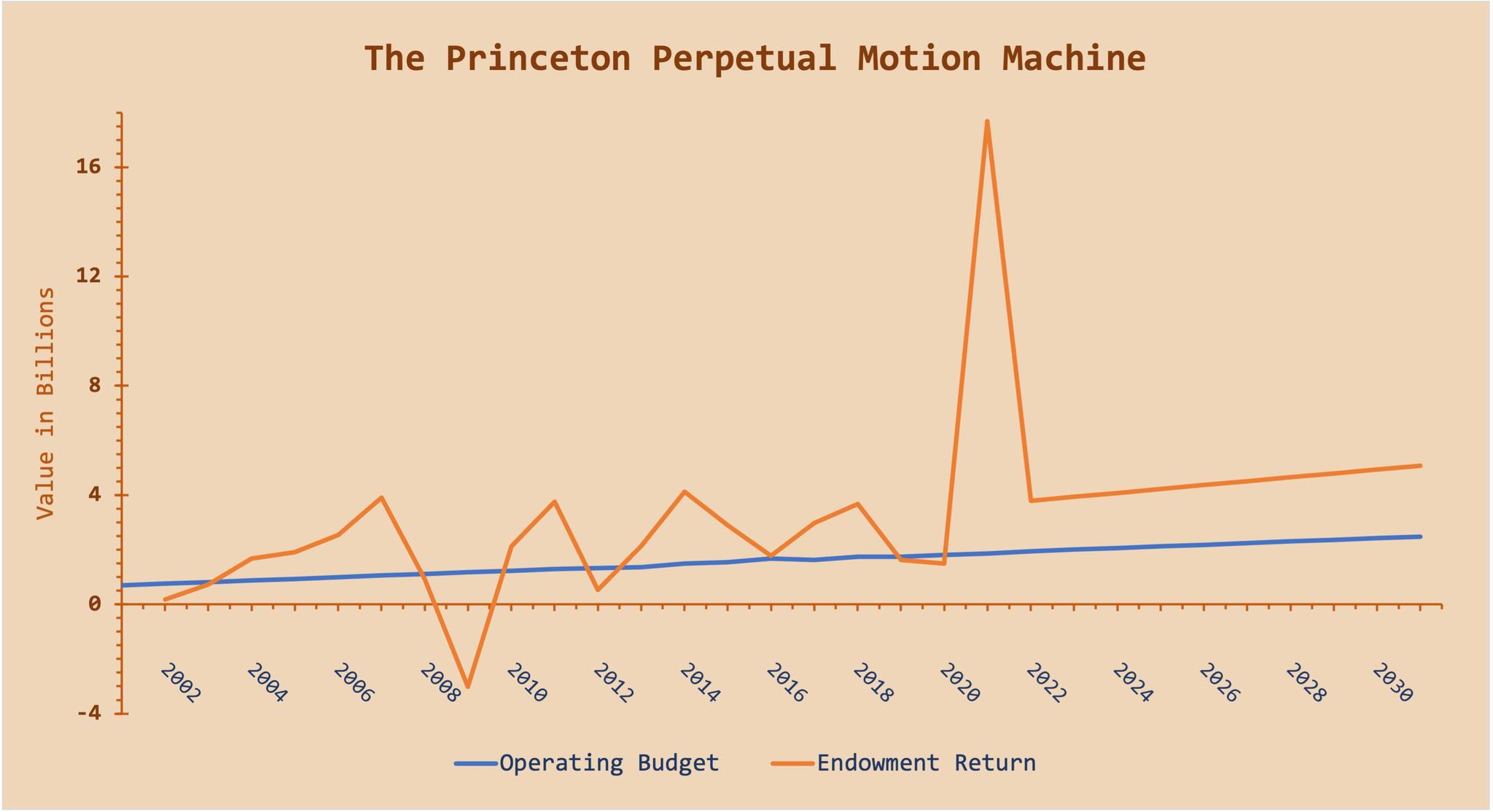Category: Recommended Reading
Edo Japan Encounters The European Clock
Amelia Soth at JSTOR Daily:

When the Jesuit Luís Fróis visited the Japanese lord Oda Nobunaga in 1569, he presented his host with a clock. Mechanical clocks were new to Japan, and this was a particularly exquisite example. Yet the feudal lord rejected the gift, saying “I do wish very much to have it. However, I do not want it because it would be wasted on me.”
What did Nobunaga mean? To start, the clock may simply not have made any sense to him. Oda Nobunaga was raised in a culture that told time in a different way: the hours he lived by were variable rather than fixed. In Japan’s traditional timekeeping system, the day was divided into nighttime and daytime portions, which were each subdivided into six intervals. In summer, the night hours grew shorter, and the daylight ones grew longer; in winter, the pattern reversed.
more here.
The Portraitist: Frans Hals And His World
Robin Simon at Literary Review:
 Frans Hals was born in Antwerp in around 1582, moved to Haarlem when he was three, found fame rather late, in his mid-thirties, died in 1666 – and was forgotten, at least outside his native country. The apparent lack of finish in his work made it unfashionable in the eyes of connoisseurs and collectors until interest in his paintings grew again in the mid-19th century. In 1865 Hals’s Laughing Cavalier was bought for a vast sum by Lord Hertford and exhibited in London to huge acclaim. Soon afterwards it entered the Wallace Collection.
Frans Hals was born in Antwerp in around 1582, moved to Haarlem when he was three, found fame rather late, in his mid-thirties, died in 1666 – and was forgotten, at least outside his native country. The apparent lack of finish in his work made it unfashionable in the eyes of connoisseurs and collectors until interest in his paintings grew again in the mid-19th century. In 1865 Hals’s Laughing Cavalier was bought for a vast sum by Lord Hertford and exhibited in London to huge acclaim. Soon afterwards it entered the Wallace Collection.
The funny thing about the Laughing Cavalier is that the cavalier isn’t laughing at all. He has a merry eye but is surely smiling, not laughing, beneath those famous whiskers. And that was just as it should be in 17th-century Haarlem, at least if you were of some social standing.
more here.
Researchers Achieve ‘Absurdly Fast’ Algorithm for Network Flow
Erica Klarreich in Quanta:
 A team of computer scientists has come up with a dramatically faster algorithm for one of the oldest problems in computer science: maximum flow. The problem asks how much material can flow through a network from a source to a destination if the links in the network have capacity limits.
A team of computer scientists has come up with a dramatically faster algorithm for one of the oldest problems in computer science: maximum flow. The problem asks how much material can flow through a network from a source to a destination if the links in the network have capacity limits.
The new algorithm is “absurdly fast,” said Daniel Spielman of Yale University. “I was actually inclined to believe … algorithms this good for this problem would not exist.”
Maximum flow has been studied since the 1950s, when it was formulated to study the Soviet railway system. “It’s older than maybe the theory of computer science,” said Edith Cohen of Google Research in Mountain View, California. The problem has many applications: internet data flow, airline scheduling and even matching job applicants to open positions. The new paper handles both maximum flow and a more general version of the problem in which you also want to minimize costs.
More here.
The Two Fiduciary Duties of Professors
Jonathan Haidt at the Heterodox Academy:
 In September 2016 I gave a lecture at Duke University: “Two Incompatible Sacred Values in American Universities.” I suggested that the ancient Greek word telos was helpful for understanding the rapid cultural change going on at America’s top universities that began in the fall of 2015. Telos means “the end, goal, or purpose for which an act is done, or at which a profession or institution aims.” The telos of a knife is to cut, the telos of medicine is to heal, and the telos of a university is truth, I suggested. The word (or close cognates) appears on many university crests, and our practices and norms — some stretching back to Plato’s academy — only make sense if you see a university as an institution organized to help scholars get closer to truth using the particular methods of their field.¹
In September 2016 I gave a lecture at Duke University: “Two Incompatible Sacred Values in American Universities.” I suggested that the ancient Greek word telos was helpful for understanding the rapid cultural change going on at America’s top universities that began in the fall of 2015. Telos means “the end, goal, or purpose for which an act is done, or at which a profession or institution aims.” The telos of a knife is to cut, the telos of medicine is to heal, and the telos of a university is truth, I suggested. The word (or close cognates) appears on many university crests, and our practices and norms — some stretching back to Plato’s academy — only make sense if you see a university as an institution organized to help scholars get closer to truth using the particular methods of their field.¹
I said that universities can have many goals (such as fiscal health and successful sports teams) and many values (such as social justice, national service, or Christian humility), but they can have only one telos, because a telos is like a North Star. It is the end, purpose, or goal around which the institution is structured. An institution can rotate on one axis only. If it tries to elevate a second goal or value to the status of a telos, it is like trying to get a spinning top or rotating solar system to simultaneously rotate around two axes. I argued that the sudden wave of protests and changes that were sweeping through universities were attempts to elevate the value of social justice to become a second telos, which would require a massive restructuring of universities and their norms in ways that damaged their ability to find truth.
More here.
Geoff Dyer interviewed by Steve Martin (2016)
“I’m the same as Mahsa. And I want my freedom”: anger at Iran’s regime spills onto the streets
Nicolas Pelham in More Intelligent Life:
 Mahsa Amini, a 22-year-old Iranian woman, died on September 16th in Tehran after being detained and allegedly beaten by Iran’s morality police for wearing an “improper” hijab – exposing too much of her head or neck. Large protests erupted throughout the country. Many women burned their headscarves and cut off their hair. Protesters chanted “death to the dictator”. There are reports that dozens of demonstrators have died in clashes with police.
Mahsa Amini, a 22-year-old Iranian woman, died on September 16th in Tehran after being detained and allegedly beaten by Iran’s morality police for wearing an “improper” hijab – exposing too much of her head or neck. Large protests erupted throughout the country. Many women burned their headscarves and cut off their hair. Protesters chanted “death to the dictator”. There are reports that dozens of demonstrators have died in clashes with police.
In recent days the authorities have shut down internet access – and also reportedly ordered the morality police off the streets, at least in the capital – in the hope of quelling the protests. But the public anger that sparked them continues to rumble.
More here.
Could immunotherapy finally break through in prostate cancer?
Anthony King in Nature:
 The first therapeutic cancer vaccine, approved more than a decade ago, targeted prostate tumours. The treatment involves extracting antigen-presenting cells — a component of the immune system that tells other cells what to target — from a person’s blood, loading them with a marker found on prostate tumours, and then returning them to the patient. The idea is that other immune cells will then take note and attack the cancer.
The first therapeutic cancer vaccine, approved more than a decade ago, targeted prostate tumours. The treatment involves extracting antigen-presenting cells — a component of the immune system that tells other cells what to target — from a person’s blood, loading them with a marker found on prostate tumours, and then returning them to the patient. The idea is that other immune cells will then take note and attack the cancer.
The 2010 decision by the US Food and Drug Administration (FDA) to approve this vaccine — called sipuleucel-T — raised hopes for a surge of cancer treatments that use the body’s natural capabilities to destroy the enemy within. Immunotherapies have at least partially delivered on that promise in many types of cancer. But not in the prostate.
More here.
Tuesday Poem
Why I Take Good Care of my Macintosh
Because it broods under its hood like a perched falcon,
Because it jumps like a skittish horse and sometimes throws me,
Because it is pokey when cold,
Because plastic is a sad strong material that is charming to rodents,
Because it is flighty,
Because my mind flies into it through my fingers,
Because it leaps forward and backward, is an endless sniffer and searcher,
Because its keys click like hail on a bolder,
And it winks when it goes out,
And puts word-heaps into hoards for me, dozens of pockets of gold under boulders
in streambeds, identical seedpods strong on vine, or it stores bins of bolts;
And I lose them and find them again,
Because whole worlds of writing can be boldly laid out and then highlighted and vanish in a flash at “delete,”
so it teaches of impermanence and pain;
And because my computer and me are both brief in the world,
both foolish, and we have earthly fates,
Because I have let it move in with me right in the tent,
And it goes with me out every morning;
We fill up our baskets, get back home,
Feel rich, relax,
I throw it a scrap and it hums.
by Gary Snyder
from This Present Moment
Counterpoint Press, Berkly CA, 2015
Sunday, October 2, 2022
Marvin Gaye at the Franprix
Justin E. H. Smith in The Hinternet:
 The signaling behavior of human beings is intricate indeed. Forty years ago a man, seething with desire, issued forth a string of identical second-person singular imperatives followed by a hortatory first-person plural:
The signaling behavior of human beings is intricate indeed. Forty years ago a man, seething with desire, issued forth a string of identical second-person singular imperatives followed by a hortatory first-person plural:
Get up, get up, get up, get up, let’s make love tonight.
As far as can be determined the immediate object of desire was not in his presence at the precise moment of his yearning. He might not have had a particular object in mind at all. No one followed the command, no one “made love”, at least not right away, at least not if we exclude the very form of erotopoiesis of which the expression of yearning was already the culmination. If we know about his yearning at all this is only because it came out of him in the presence of a complex arrangement of electrical signals and magnetic tape —basic materials and principles of the physical world—, which “recorded” his voice somewhat in the way tree rings record a season’s rain, and the layers of Antarctic ice record the radioactivity of a nuclear test in the Bikini Atoll. And like radioactivity, once such yearning is caught on tape and released into the world, it is hard indeed to drive it out again.
More here.
What Math Can Tell Us About the Nature of the Universe
Manil Suri in Literary Hub:
 The aim of my piece was to challenge the popular notion that mathematics is synonymous with calculation. Starting with arithmetic and proceeding through algebra and beyond, the message drummed into our heads as students is that we do math to “get the right answer.” The drill of multiplication tables, the drudgery of long division, the quadratic formula and its memorization—these are the dreary memories many of us carry around from school as a result.
The aim of my piece was to challenge the popular notion that mathematics is synonymous with calculation. Starting with arithmetic and proceeding through algebra and beyond, the message drummed into our heads as students is that we do math to “get the right answer.” The drill of multiplication tables, the drudgery of long division, the quadratic formula and its memorization—these are the dreary memories many of us carry around from school as a result.
But what if we liberated ourselves from the stress of finding “the right answer”? What would math look like if delinked from this calculation-driven motivation? What, if anything, would remain of the subject?
More here.
Right and left are united in a vulgar form of historicism
Arjun Appadurai in The Chronicle of Higher Education:
 The recent debate over “presentism” among historians, especially those based in the United States, has generated both heat and light. It is a useful conversation to have now, at a moment when the public sphere, and even more so the university’s space within it, seems to consist more of mines than of fields. Debates about Covid-19, affirmative (in)action, antisemitism, sexual violence, student debt, Title IX, Confederate monuments, racist donors, resigning presidents, and rogue trustees combine to occlude the daylight of classes, books, and learning.
The recent debate over “presentism” among historians, especially those based in the United States, has generated both heat and light. It is a useful conversation to have now, at a moment when the public sphere, and even more so the university’s space within it, seems to consist more of mines than of fields. Debates about Covid-19, affirmative (in)action, antisemitism, sexual violence, student debt, Title IX, Confederate monuments, racist donors, resigning presidents, and rogue trustees combine to occlude the daylight of classes, books, and learning.
It is no wonder that the hills are alive with the sound of presentism. Absent a serious space for reflection, debate, and deliberation in or on the actually existing present, it becomes easy to claim that my history is bigger than yours, or more ethically relevant, or more marginalized. In this weaponized sense everyone is in the history business, and it is only in the relative calm of graduate programs, annual meetings, journal submissions, and the recruitment of professional historians that the soothing hum of sources, chronologies, periods, and methods can still be heard.
The weaponized present is always lurking.
More here.
Malcolm Gladwell: Princeton University Is the World’s First Perpetual Motion Machine
Malcolm Gladwell in Oh, MG:
 After a stellar year in 2021, Princeton University has an endowment of $37.7 billion. Over the past 20 years, the average annual return for the endowment has been 11.2 percent. Let us give Princeton the benefit of the doubt and assume that at least some of that was luck and maybe unsustainable, and that a more reasonable prediction going forward would be that Princeton can average a return on its investments of an even 10 percent a year. That puts Princeton’s endowment return next year at roughly $3.77 billion.
After a stellar year in 2021, Princeton University has an endowment of $37.7 billion. Over the past 20 years, the average annual return for the endowment has been 11.2 percent. Let us give Princeton the benefit of the doubt and assume that at least some of that was luck and maybe unsustainable, and that a more reasonable prediction going forward would be that Princeton can average a return on its investments of an even 10 percent a year. That puts Princeton’s endowment return next year at roughly $3.77 billion.
Now—what is Princeton’s annual operating budget? $1.86 billion. The arithmetic here is not hard. $3.77 billion in investment income minus $1.86 billion in operating expenses leaves you with $1.91 billion.
Princeton could let in every student for free. The university administrators could tell the U.S. government and all of its funding agencies, “It’s cool. We got this.”
They could take out the cash registers in the cafeteria, hand out free parking to all visitors, give away Princeton sweatshirts on Nassau Street, and fire their entire accounts receivable staff and their entire fundraising staff tomorrow.
More here.
An Intimate History of Evolution – the incredible Huxleys
Stuart Jeffries in The Guardian:
 “Dear Sir,” wrote a nameless correspondent to Julian Huxley in 1937. “Would you consent to being the father of my wife’s child, possibly by artificial insemination?” Alison Bashford doesn’t reveal what prompted the request, nor if the evolutionary biologist, eugenicist and ecologist supplied the genetic material.
“Dear Sir,” wrote a nameless correspondent to Julian Huxley in 1937. “Would you consent to being the father of my wife’s child, possibly by artificial insemination?” Alison Bashford doesn’t reveal what prompted the request, nor if the evolutionary biologist, eugenicist and ecologist supplied the genetic material.
But she certainly knows why the correspondent would request it. The Huxley family, seemingly, had the right stuff that anyone would want to graft on to their family tree. The dynasty of geniuses began with Julian’s grandfather, Thomas Henry Huxley (1825-95), the great Victorian biologist and comparative anatomist known as Darwin’s bulldog for savaging critics of his friend’s account of natural selection, and proselytising that we descend not from Adam and Eve but from apes. His grandson Julian (1887–1975) was a biologist, a transhumanist, a poet, sci-fi writer, the secretary of London zoo, the first Unesco director general, a broadcasting catalyst for David Attenborough, a eugenicist and a leading figure in the “modern synthesis” that married Darwin’s theory of evolution with the first geneticist, gardening monk Gregor Mendel’s ideas on heredity.
The rest of the Huxleys were no slouches either. Julian’s physiologist half-brother Andrew was a Nobel laureate. Julian’s son Francis was an anthropologist and founder of Survival International. The most famous Huxley, Julian’s brother Aldous, author of Brave New World and devotee of consciousness-altering drugs, was perhaps a bit of an underachiever. The Huxleys were like the Kardashians in one sense only: it was hard to keep up with them.
More here.
Iran’s First Feminist Uprising Woman! Life! Freedom!
Kian Tajbakhsh in Public Seminar:
 Zan, Zendegi, Azadi: Woman! Life! Freedom!
Zan, Zendegi, Azadi: Woman! Life! Freedom!
This is the stirring slogan of the protests that have erupted across Iran, triggered by the death of Mahsa Amini, a 22-year old Kurdish Iranian woman who was visiting Tehran with her family when Iran’s morality police detained her on September 16 for showing too much hair under her hijab (head scarf).
Led by predominantly young women and men in their late teens and twenties, the nonviolent protests are expressing a range of priorities. Beyond their frustrations at the indignities of being harassed and arrested for violating the Islamic dress code—not to speak of the danger of dying as Amini did—most are also expressing a desire to live under a different system of government. I believe we are witnessing something unprecedented in Iranian history: a feminist social movement. The renewed demand for accountable government and individual freedom—the liberal democratic ideal—has sprung up from the battle over the patriarchal control of women’s bodies and the paternalistic domination of public space.
Today’s feminist movement, women and men alike, is saying no: women will exist in public not as wards under the control of male guardians of religious law, but as equal citizens. They are demanding recognition of basic individual human dignity and liberty, such as modern individuals have come to expect.
More here.
Bill Plante (1938 – 2022) Journalist And Correspondent
Pharoah Sanders (1940 – 2022) Jazz Saxaphonist
Ray Edenton (1926 – 2022) Country Music Guitarist
Sunday Poem
Barbarians
They do not come with furred caps,
Smelling of maresmilk, scimitared,
Dour, as tellable as kites.
They live quietly next door,
Speak almost the same language,
Wear almost the same clothes,
Inside the walls. But
Do not think they lack
Precisely the same intentions.
by John Fowles
from Poems– John Fowles
the Ecco Press, NY, 1973
Saturday, October 1, 2022
Africa’s Century of Growth?
 Alden Young in Phenomenal World:
Alden Young in Phenomenal World:
On May 1, 2014, Nigeria’s then-president, Goodluck Jonathan, addressed a crowd of workers in the country’s capital Abuja. He declared that “the challenge of the country is not poverty, but redistribution of wealth.” The prompt for his comment was a report issued only a few days prior, which labeled Nigeria, Africa’s most populous country, as one of only five nations that are home to two-thirds of the world’s population living in extreme poverty. Rejecting the categorization of Nigeria as a poor country, President Jonathan pointed to the country’s Gross Domestic Production (GDP), which he declared was “over half a trillion dollars.” Moreover, the economy, he maintained, was “growing at close to 7 percent.”
It was only a week before the president’s address that the official figure for Nigeria’s GDP had been significantly revised. The first reexamination of the structure of the Nigerian economy since 1990 showed an increase in the country’s 2013 GDP by 89 percent. Scholars were surprised by the dramatic growth in the banking and telecommunications sectors and the significant decline in the relative size of the hydrocarbon sectors.
With little outside recognition, the Nigerian economy had transformed itself in the space of a couple of decades.
More here.
